Do You Acquire Email Subscribers Like Top UK Brands? Check Yourself Here
After nearly 20 years in the industry, it still astonishes me to find how many email marketers aren't doing everything they can – legally! – to acquire high-quality subscribers.
Investing time and money in the subscription process just makes business sense. A healthy, growing and active email list gives you a competitive advantage. It costs less than paid search or ads. You own the customer relationship and the platform. You can learn more about your customers as the relationship goes on. Plus, the ROI can't be beat.
I know you agree with me about email. Otherwise, you wouldn't be reading this. So, why do so many other marketers fail to capitalize on the opportunity to attract more subscribers?
I puzzled over this repeatedly as I went over the results of a research project my company, Holistic Email Marketing, did earlier this year in partnership with Pure360. We wanted to assess the state of the email subscription process for retail brands.
So, we subscribed to more than 80 UK brands and looked at three parts of the process: the newsletter opt-in form, the account-registration form, and the post registration experience. We registered as customers if the brands gave us that option and then tracked the email results and compiled them to get an accurate picture of retailers' email subscription practices.
What we learned, in a nutshell
In short, we found many marketers missed obvious opportunities to connect with customers and begin a conversation. Sometimes it was just a small percentage of marketers. Other times, more than half of the marketers missed the boat on a key opt-in opportunity.
I'll detail some of our key findings in the next section (and you can download your own copy of our report, The State of Retail Email Subscribe Forms 2018. But before I go on, I want to call out a unique result of our research.
Our findings allowed us to draw a clear and convincing picture of brands who are winning with their email subscribe forms.
We concentrated on this aspect of the process because it's so important. Once you master it, your list will grow like crazy with the subscribers who will drive the greatest value for your email program.
Here's what we found about these winning brands:
- They go above and beyond best practice, making creative use of technology.
- They write clear, jargon-free opt-in messaging.
- They sell the benefits of signing up to their lists.
- They make strong use of popovers.
- They have prominent forms everywhere that’s relevant.
Keep reading for some of the highlights of our research.
The State of Email Subscribe Forms 2018: 6 key results
As mentioned before, we broke the subscribe process into three parts: the email subscribe form itself, email subscribing through account registration, and what happened post-registration.
Email subscribe forms
Getting this form right is essential for everything that happens farther down the road in the customer's engagement and perceptions of the brand.
- 87% of brands put the signup BELOW the fold, and one brand didn’t have a newsletter subscribe on the homepage.
A lot of subscribe forms ended up scraping the bottom of the homepage. Did you find it
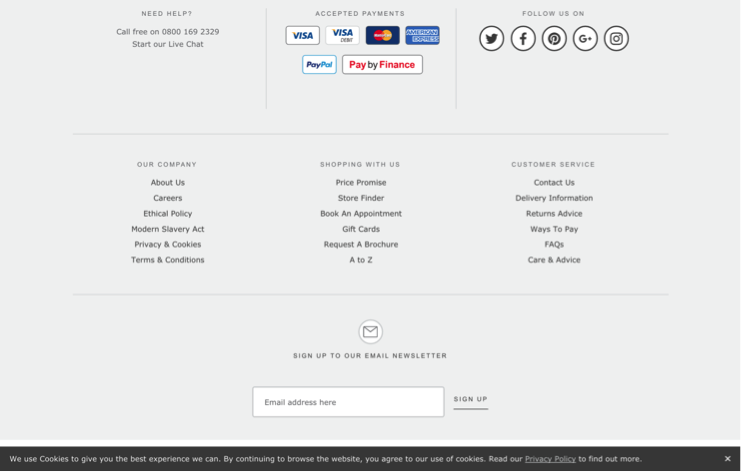
Turf wars between email, web and other marketing stakeholders can end up dictating where the subscribe form goes. Or, the page designer puts it anywhere it fits – anywhere but the prime visibility at the top of the page.
To combat this, pull out the numbers and show the difference in cost between acquiring a subscriber through a prominent form on a platform you own (your website) and acquiring her through paid search.
This brand did a lovely job of recognizing the value of email by positioning the subscribe form in prime homepage real estate:
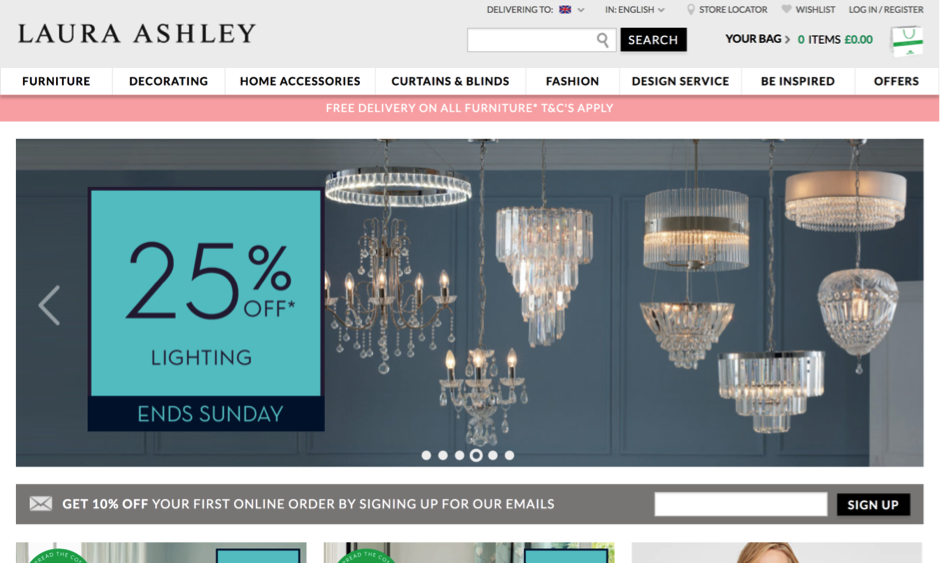
- Only 46% of subscribe forms list clear benefits.
Do you know anyone who wants more email? The thrill of getting messages directly from the brands you buy is long gone. But it looks as if more than half of today's marketers forgot to answer that key question in every consumer's mind: "What's in it for me?"
That's one of the biggest changes that GDPR brings to the permission process. Because dodgy practices like passive or default opt-ins are out, you must sell your email program as competitively as you do your products or services. That means focusing on benefits.
Don't assume your customers will see the benefits for themselves. Above all, remember this: A transaction is taking place, even if no money has changed hands.
Takeaways:
- Be visible! Compile statistics to show why tactics that encourage strong list growth – like giving up a slice of prime homepage real estate for a subscribe form – can benefit the entire program.
- Test to find the spot where a subscribe form will get the most activity on your home page, landing pages tied to your search ads and all other relevant interior pages.
- Suggest a soft conversion – "Sign up for our newsletter" – instead of aiming to make a sale on every visit. Your sophisticated conversion messages sent through your email marketing program can do this work for you.
- List at least one benefit in the subscribe form. Boil it down to the simplest language possible, and frame it to support the customer's self-interest.
Account registration forms
This form is separate from the subscribe form, but it can help or hurt the customer experience.
- 62% of registration forms allow customers to register using the same email address that they had just signed up with.
This is a good thing, right? Yes, but think about the other 38%, which don't let you use the same email address to open an account. What a confusing and poor customer experience!
Presumably, the technology would reject that move as a duplicate registration. Don't let that happen, though. Work with IT to fix the technology. Your customers' user experiences are more important.
- Most account registration forms have 5 to 7 mandatory fields.
Many of your customers might use mobile devices to create accounts. Requiring many form fields can lead to abandonment and frustration. If you use account registration to drive email signups, those represent lost opportunities.
Seven of the 10 fields in this form are mandatory. The brand could easily have used progressive screens to collect that data.
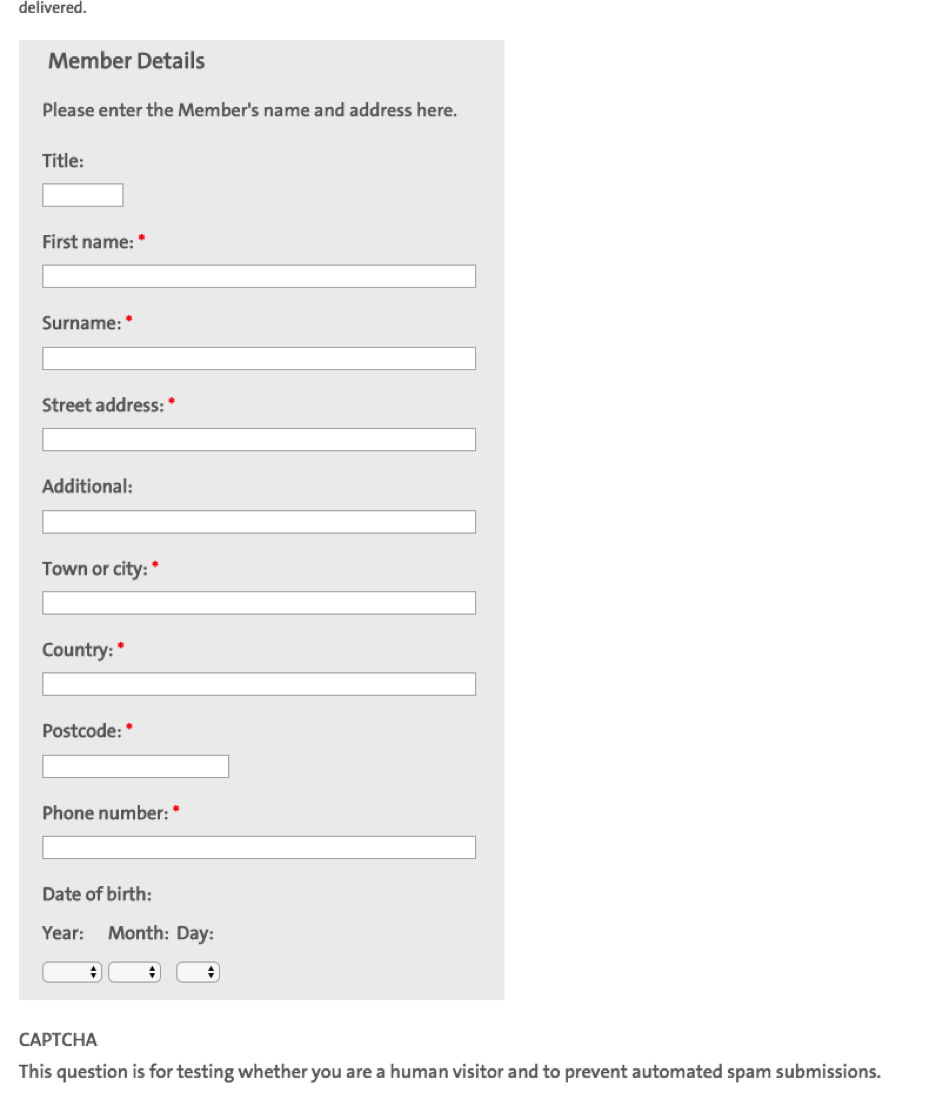
In contrast, this Topman progressive popover asks for additional data after the opt-in. Bonus: It explains why and how the information will be used. This is a necessity under GDPR.
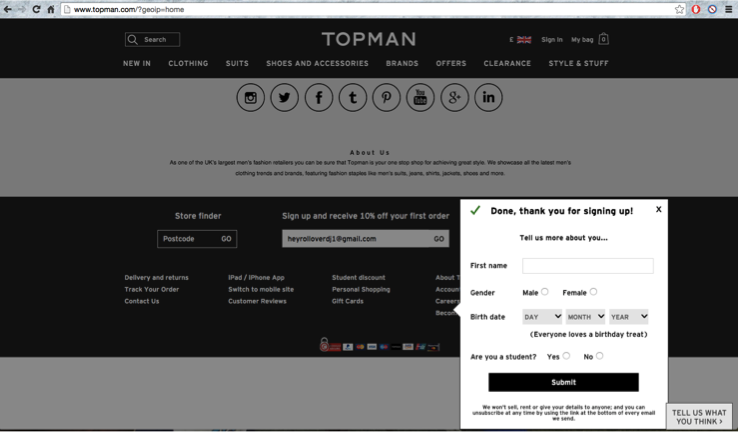
- 49% of checkboxes promoting email opt-ins during account registration were pre-checked.
Although U.S. email law still allows checked permission boxes on forms, they're out for UK and other EU email marketers under GDPR. Canada's Anti-Spam Law also prohibits pre-checked boxes or unchecked opt-out boxes.
Besides presenting our findings on email subscribe practices, our report also goes into some detail on acceptable email permission practices under GDPR, which affects marketers beyond the EU who have customers or subscribers in the EU.
Takeaways:
- Make account registration as seamless as subscribing to your email program, breaking it into manageable chunks triggered by email reminders.
- Add a checkbox to the form asking for permission to send marketing messages to customers who don't connect with your brand via a subscribe form. But be clear about the content and give email subscribers a checkbox that indicates they already receive marketing emails, or better still, remove this signup option once they’ve given you permission, so they don’t see it next time they purchase.
Post-Registration
As with the post-subscription experience, what happens after customers register for accounts can either build engagement and loyalty or hurt them.
- Only 43% of retailers sent an account registration confirmation email.
The registration-confirmation email serves the same purpose as an email confirmation or welcome message. Personalize it with the account-holder's details, and link back to the account to make corrections or updates a breeze.
This email also gives you another opportunity to promote your email program to customers who created accounts but did not check the box to opt in to your offers.
To be most effective, you should set it up using dynamic content, so that account-holders who have already subscribed to receive marketing emails see a different message. See how H&M include this as a CTA in its registration confirmation email.
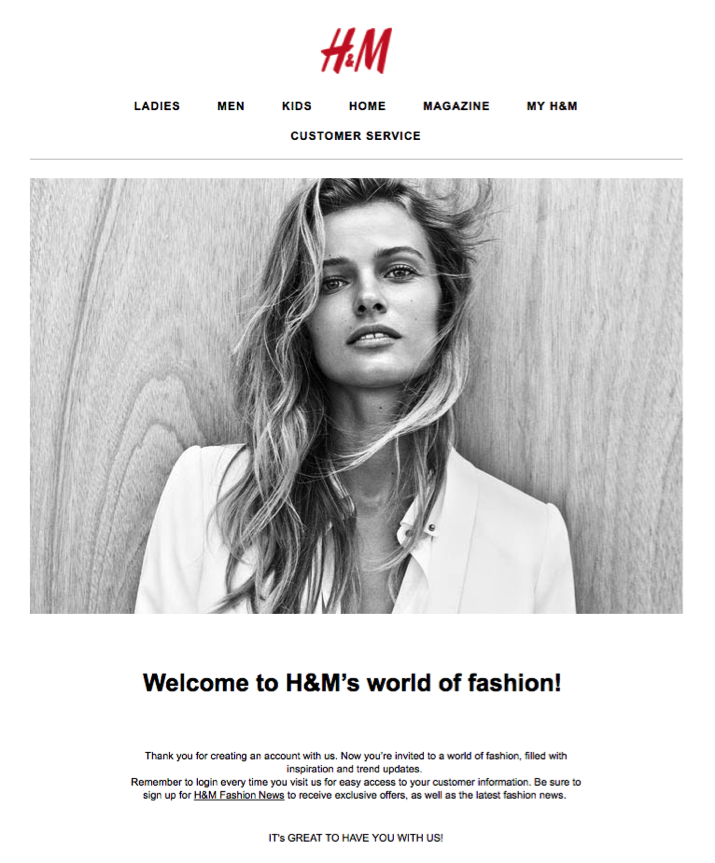
Takeaway:
- Your account-registration process needs the same care and attention as your email-subscription process. Audit it for potential stumbling blocks. Look for opportunities to cross-promote your email program to non-subscribers.
Wrapping up: Why email (and subscribing) still matters
If you see email as the motivating factor that keeps customers moving on the path from inquiry to purchase to loyalty, then one thing quickly becomes clear:
A subscribe process which has been optimised to be as seamless and painless as possible is a must-have for both short-term and long-term success.
We as email marketers are always striving to become more sophisticated email marketers. We now have access to email technology we could only have dreamed of a decade ago. We're always being challenged to level-up our email game. And that's good, to a point.
We must remember that none of our email technology will work well if we don't supply it with fresh, active email addresses. We can't let basic tactics such as optimizing the opt-in process be forgotten. These basics can have the greatest impact!
I hope you'll grab a copy of our report, because we've lots more surprising findings, background information that will help you make more informed decisions and a breakdown of acceptable email subscribing and permission practices under GDPR.
Now is a great time to review your own subscribe processes and practices and to identify and test needed improvements. Do it, not simply to comply with GDPR but because it will benefit your email program and help you achieve your business goals.

 How to resolve AdBlock issue?
How to resolve AdBlock issue? 